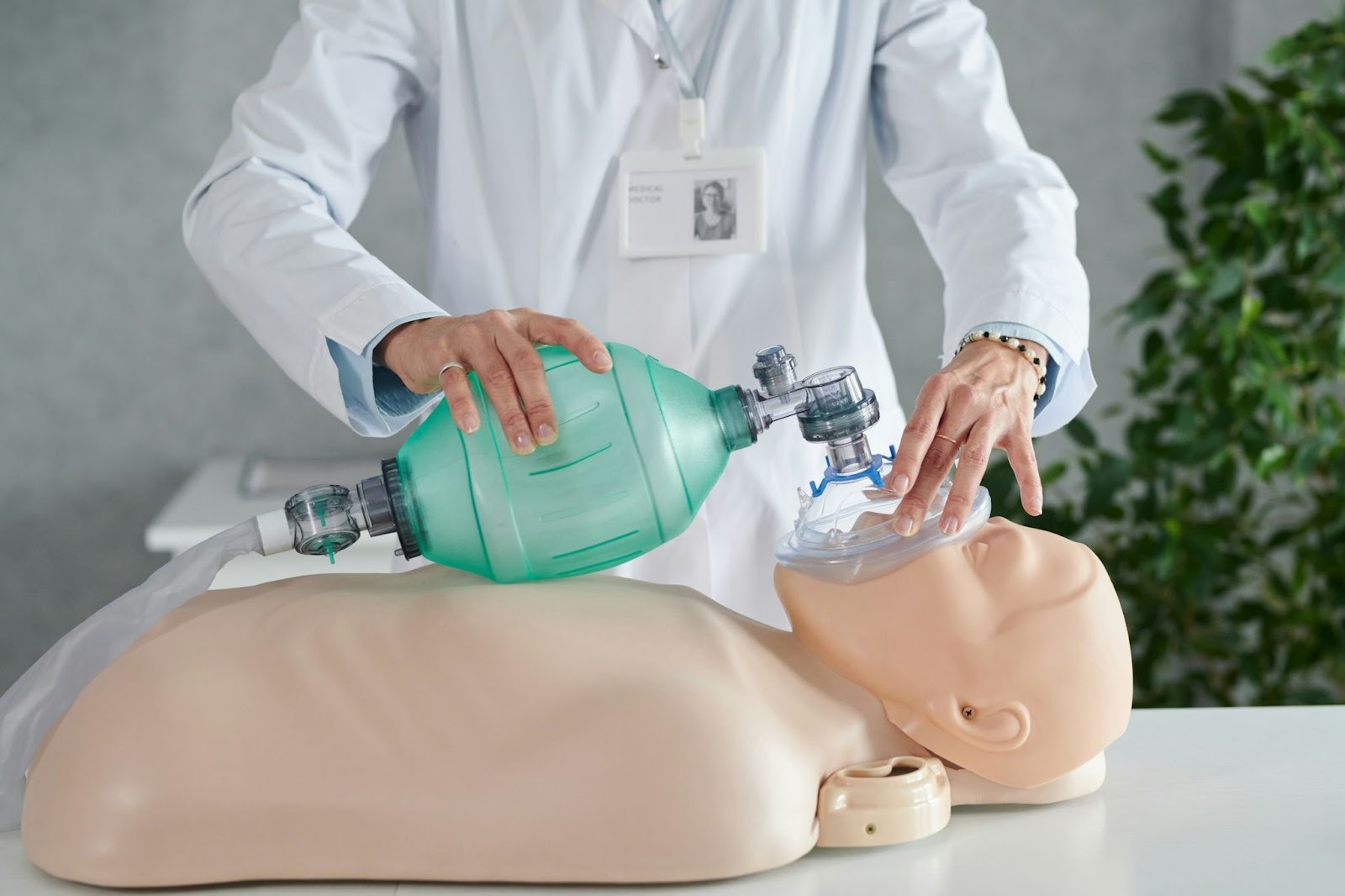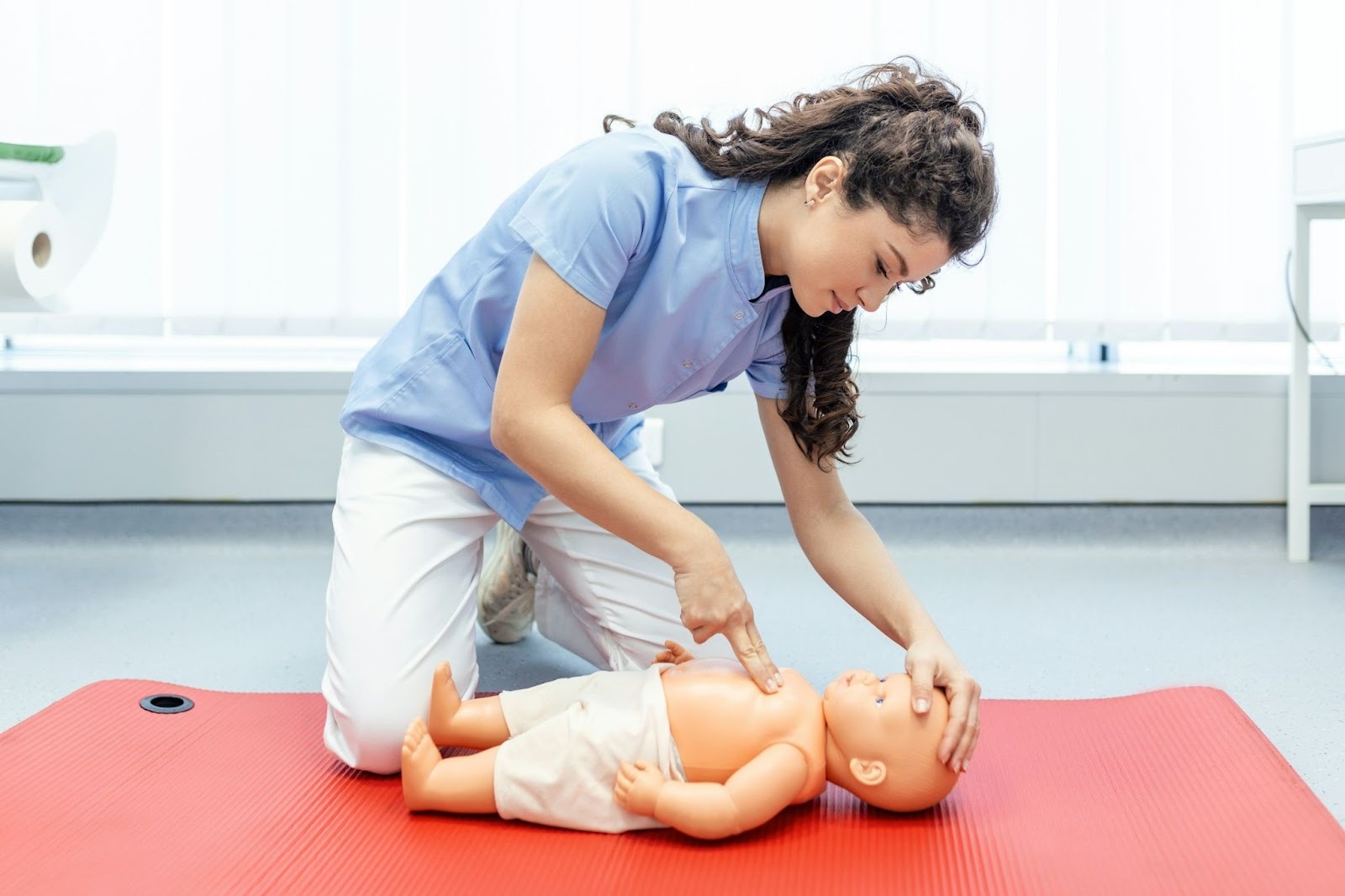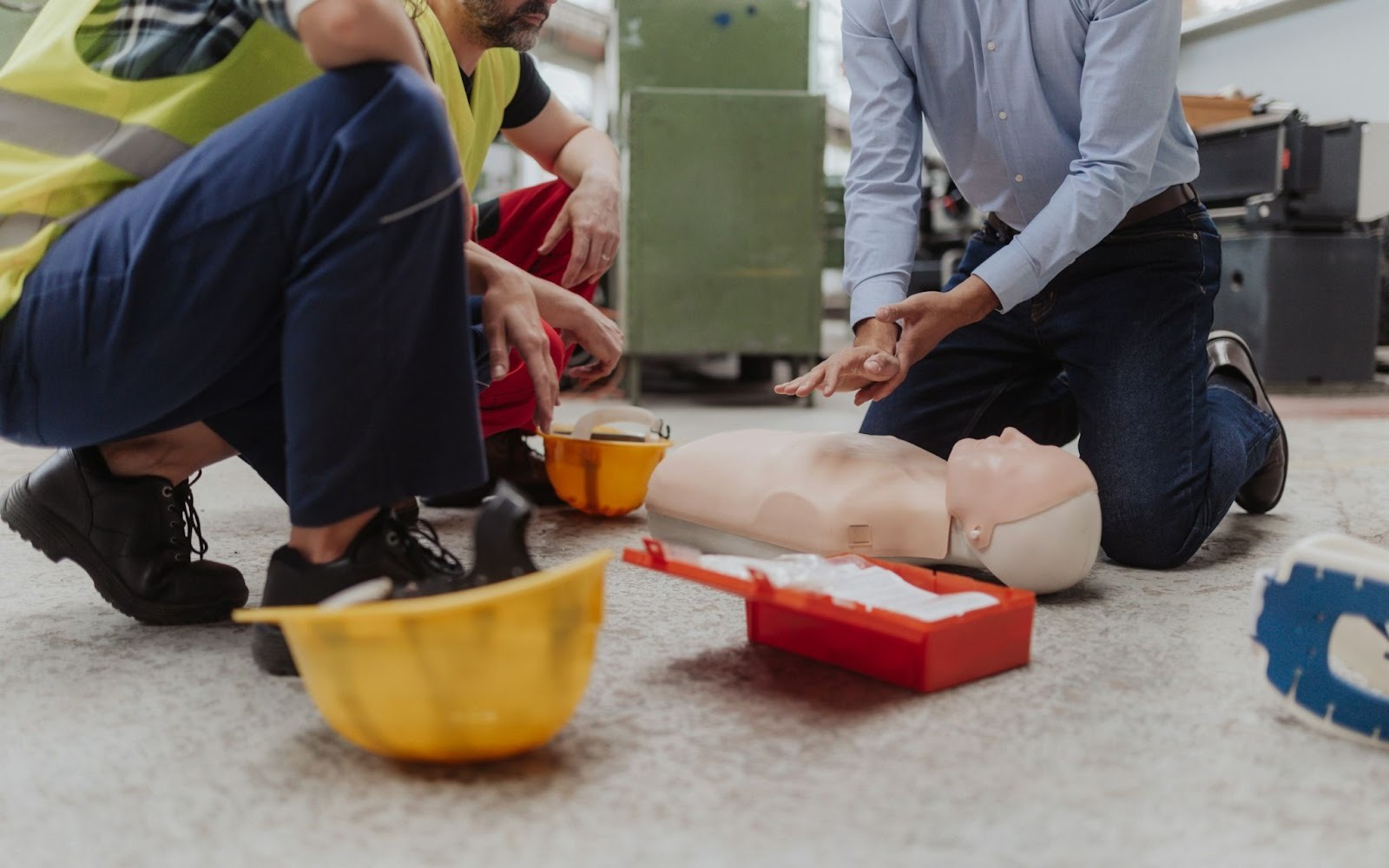The American Heart Association has released its 2025 AHA CPR guidelines for CPR and Emergency Cardiovascular Care, marking a significant evolution in resuscitation science and education. These guidelines represent years of research, clinical trials, and expert consensus aimed at improving patient outcomes during cardiac emergencies.
It's crucial to understand how these changes affect your certification requirements and clinical practice. The recent ACLS guideline updates, which include specific strategies for dealing with ventricular fibrillation, the BLS guideline updates, and the PALS guideline updates aren't just minor tweaks—they reflect substantial shifts in evidence-based practices that directly impact how you perform resuscitation.
Staying current with these guidelines is essential for maintaining your competency as a healthcare provider. Outdated techniques can compromise patient safety and put you at professional risk.
This article breaks down the impact of recent guideline updates on ACLS, BLS, and PALS courses in practical terms. You'll discover specific changes to course content, new training approaches such as the option of online BLS courses, expanded focus areas, and what these modifications mean for your next certification or recertification. Whether you're a physician, nurse, paramedic, or other healthcare professional, these updates will shape how you respond to emergencies.
For instance:
The BLS course forms the foundation of resuscitation training for all healthcare providers. You'll learn high-quality chest compressions, proper ventilation techniques, and how to use an automated external defibrillator (AED). This course targets a broad audience including physicians, nurses, paramedics, emergency medical technicians, and other healthcare professionals who need to respond to cardiac emergencies in both in-hospital and out-of-hospital settings.
The ACLS course builds upon your BLS skills by adding advanced interventions for adult patients. You'll master systematic assessment approaches, airway management, rhythm recognition, defibrillation protocols, medication administration, cardioversion, and pacing. The course emphasizes high-performance team dynamics during cardiac arrest, stroke, and other cardiopulmonary emergencies. Healthcare providers who manage critical patients—including emergency department staff, intensive care unit personnel, and cardiac care teams—require ACLS certification. To excel in managing critical situations such as adult tachycardia with a pulse, consider enrolling in an affordable ACLS course that provides expert guidance.
The PALS course focuses specifically on pediatric resuscitation. You'll learn age-appropriate assessment techniques, recognition of respiratory distress and shock, and systematic intervention strategies for critically ill infants and children. This specialized training serves pediatric emergency physicians, pediatric intensive care nurses, paramedics responding to pediatric calls, and any healthcare provider responsible for managing pediatric emergencies. Moreover, it is essential to understand child safety at home when dealing with such cases.
These three courses form the backbone of emergency cardiovascular care, equipping you with evidence-based skills to improve patient survival rates during life-threatening situations. Additionally, the integration of AI into these courses is transforming emergency cardiac care by improving diagnosis and treatment precision through advanced data analysis and real-time decision support.
The 2025 AHA guidelines changes represent a significant evolution in resuscitation science, built on extensive research and clinical evidence gathered since the previous update. These ECC guideline revisions incorporate breakthrough discoveries in cardiac arrest management, post-resuscitation care, and emergency response protocols that directly influence how you approach patient care.

The guidelines place unprecedented emphasis on evidence-based practices that demonstrate measurable improvements in patient survival rates and neurological outcomes. You'll find that every recommendation stems from rigorous scientific review, with particular attention to real-world application and reproducibility across different healthcare settings. The AHA analyzed thousands of studies to identify interventions that consistently produce better results for patients experiencing cardiac emergencies.
CPR science updates introduce refined techniques for chest compressions, ventilation strategies, and medication administration timing. The research reveals specific compression depths, rates, and recoil patterns that optimize blood flow during resuscitation efforts. You'll notice enhanced focus on minimizing interruptions during CPR and improving the quality of each compression cycle.
The 2025 guidelines also revolutionize educational delivery through restructured content modules and innovative teaching methodologies. The AHA redesigned course materials to enhance knowledge retention and skill application under pressure. You can access these updates through the online Science In-Service, which breaks down complex changes into digestible segments that help you understand the rationale behind each modification.
Moreover, if you are part of a group registering for ACLS courses, don't forget to utilize the Group Registration Key Redemption feature on Affordable ACLS's website to streamline your registration process.
The 2025 AHA Guidelines bring substantial changes to ACLS training that reshape how healthcare providers approach advanced cardiovascular emergencies. These updates directly influence the structure, content, and delivery of ACLS certification programs, requiring both new learners and experienced practitioners to adapt to enhanced protocols and expanded competencies.
The updated ACLS curriculum maintains its foundation in ACLS foundational skills while significantly broadening the scope of clinical scenarios and interventions. You'll notice the course now places greater emphasis on building high-performance teams in ACLS settings, recognizing that successful resuscitation depends on coordinated team effort rather than individual expertise alone.
Here are some key changes in the ACLS 2025 curriculum:
These changes reflect the evolving understanding of effective resuscitation practices and the importance of teamwork in emergency situations.
The ACLS airway management update introduces refined techniques based on recent evidence about optimal ventilation strategies during cardiac arrest. The guidelines now provide clearer direction on when to escalate from basic airway interventions to advanced techniques, helping you make better-informed decisions under pressure. You'll learn updated protocols for supraglottic airway devices and endotracheal intubation that prioritize minimizing interruptions to chest compressions.
The rhythm recognition changes represent another critical area where the 2025 guidelines impact your training. The updated course enhances your ability to quickly identify and respond to cardiac rhythms through improved teaching methods and expanded case scenarios. Defibrillation protocols now incorporate the latest research on energy levels, pad placement, and timing considerations that can improve patient outcomes.
For instance, understanding Adult Bradycardia with a Pulse is now more streamlined with our expert guidance, allowing you to gain confidence in managing such critical situations.
The medication protocols ACLS 2025 reflect new evidence about drug administration during resuscitation efforts. You'll see revisions in:
These updates ensure that your knowledge of medication interventions aligns with current best practices.
The course content now addresses systematic assessment approaches more comprehensively, teaching you to evaluate patients using structured frameworks that reduce the likelihood of missed critical findings. This systematic methodology applies across all emergency cardiovascular scenarios, from cardiac arrest to acute coronary syndromes and stroke management.
If you're looking to advance your career in healthcare by obtaining your ACLS certification, consider enrolling in an Affordable ACLS course today. The process is designed to be convenient and efficient, enabling you to take that next step towards professional growth. For more information on various aspects of the ACLS certification, feel free to explore our ACLS certification category.
The 2025 guidelines introduce a dedicated ACLS for Experienced Providers course that addresses the needs of seasoned clinicians who require training beyond standard ACLS foundational skills. This specialized curriculum recognizes that experienced healthcare professionals encounter complex scenarios demanding deeper clinical knowledge and enhanced decision-making capabilities.
This advanced course targets physicians, critical care nurses, and emergency medicine specialists who regularly manage high-acuity patients. The program extends beyond basic cardiac arrest management to encompass advanced cardiovascular emergencies training that you might face in intensive care units and emergency departments.
The curriculum focuses on three critical domains:

This specialized training builds upon the importance of team dynamics and communication during cardiac emergencies while adding layers of clinical complexity. You'll develop skills in managing patients who don't fit standard algorithms, requiring you to synthesize multiple treatment pathways simultaneously. The course prepares you for real-world scenarios where high-performance teams in ACLS must navigate ambiguous clinical presentations and rapidly evolving patient conditions.
Moreover, the course highlights the significance of obtaining certifications such as ACLS and BLS for primary care physicians. These certifications not only enhance their skill set but also prepare them to handle emergent care situations effectively. If you're interested in acquiring these essential skills, there are convenient ways to get your BLS certification along with your ACLS training, ensuring you are well-equipped to provide comprehensive patient care.
The ACLS Provider Manual 2025 edition represents a comprehensive overhaul of educational materials, incorporating all evidence-based changes from the latest guidelines. This manual serves dual purposes: it functions as your primary learning tool during certification and as a clinical reference you can rely on during actual emergencies. The manual's structure now emphasizes ACLS foundational skills while providing detailed protocols for ACLS airway management update, rhythm recognition changes, and medication protocols ACLS 2025.
The manual specifically addresses how updated ACLS builds upon basic life support competence, creating clear connections between BLS techniques and advanced interventions. You'll notice expanded sections dedicated to the importance of team dynamics and communication during cardiac emergencies, reflecting the growing recognition that technical skills alone don't guarantee optimal patient outcomes.
To supplement these printed resources, the AHA offers an online platform known as the AHA Science In-Service for providers. This digital resource is designed to bridge the gap between guideline publication and course implementation, providing concise summaries of critical guideline changes, video demonstrations of updated techniques, interactive modules explaining the science behind protocol modifications, and quick-reference materials for immediate clinical application.
You can access the Science In-Service before attending your certification course, allowing you to arrive prepared and maximize your hands-on training time. This approach supports high-performance teams in ACLS by ensuring all team members understand the rationale behind updated protocols.
For those pursuing additional certifications, such as PALS, it's essential to have effective study strategies. You can find some valuable insights in this article about the best study tips tailored for online course takers, which can help you excel in your studies and succeed in your certification journey.
The 2025 AHA Guidelines bring significant refinements to Basic Life Support training that directly affect how you'll learn and perform fundamental resuscitation skills. These changes target the core components of BLS while introducing evidence-based modifications that enhance your ability to save lives in critical moments.
The updated BLS courses place heightened emphasis on BLS quality compressions update standards that reflect the latest research in chest compression effectiveness. You'll notice more specific guidance on compression depth, rate, and recoil—each element calibrated to maximize blood flow during cardiac arrest. The 2025 guidelines integrate new evidence showing that even minor variations in compression quality can significantly impact patient survival rates.
Ventilation techniques BLS 2025 have evolved to address common challenges healthcare providers face during resuscitation. The updated training clarifies the balance between compression and ventilation, providing you with clearer protocols for:
These modifications stem from studies demonstrating that excessive ventilation can harm patient outcomes. You'll learn precise techniques that maintain adequate oxygenation without compromising circulation.
The 2025 BLS course structure has undergone strategic adjustments designed to improve how you retain and apply critical skills. The AHA recognized that traditional training methods sometimes resulted in skill degradation between certification periods. The updated approach addresses this challenge through focused content delivery that prioritizes the most impactful interventions.
Simulation-based learning now plays a more prominent role in BLS training. You'll engage with realistic scenarios that mirror actual emergency situations, allowing you to practice decision-making under pressure. These simulations incorporate immediate feedback mechanisms that help you identify and correct technique errors in real-time.
The feedback systems integrated into the updated courses use both instructor observation and technology-assisted monitoring. You'll receive specific, actionable guidance on your compression depth, rate, hand placement, and ventilation technique. This data-driven approach ensures you develop muscle memory for high-quality CPR that persists beyond the classroom.
Moreover, it's essential to understand the broader context of these life-saving skills. For instance, advanced cardiac care such as ACLS can make a significant difference in critical situations. This is why it's beneficial for all healthcare staff, including those in dental practices who may encounter medical emergencies, to be trained in both BLS and ACLS. Such training enhances their readiness to respond effectively under pressure, ultimately improving patient outcomes.
The 2025 pediatric resuscitation updates bring significant changes to PALS training, reflecting the latest pediatric-specific research and clinical evidence. These modifications directly address the unique physiological considerations of treating infants and children during critical emergencies.
The updated PALS guidelines change pediatric emergency care by introducing refined assessment algorithms that better account for age-specific variations in pediatric patients. You'll notice updated intervention priorities that reflect new understanding of pediatric cardiac arrest mechanisms and recovery patterns. The revised protocols now include:
These evidence-based modifications help you make faster, more accurate decisions when treating pediatric patients. The updated algorithms incorporate real-world data from pediatric cardiac arrest registries, giving you protocols that have demonstrated improved outcomes in clinical settings.
The 2025 guidelines place particular emphasis on early recognition and intervention for reversible causes of pediatric cardiac arrest. You'll learn updated approaches to managing conditions like hypoxia, hypovolemia, and metabolic disturbances that commonly precipitate pediatric emergencies. The revised assessment tools help you identify deteriorating patients before they progress to full cardiac arrest.
Pediatric resuscitations demand exceptional coordination among multidisciplinary teams, and the updated PALS courses reflect this reality. You'll experience training that places greater emphasis on communication protocols specifically designed for high-stress pediatric scenarios.
The 2025 PALS training incorporates simulation-based exercises that replicate the emotional and logistical challenges of treating critically ill children. You'll practice:
In addition to these changes, it's important to note the role of Basic Life Support (BLS) certification in enhancing safety and teamwork among healthcare providers, including those working in high-risk professions such as electrical contracting. Understanding the Pediatric Basic Life Support Algorithm, particularly when two rescuers are present, is a crucial aspect of this training.
Moreover, it's essential to distinguish between Pediatric Advanced Life Support (PALS) and Advanced Cardiovascular Life Support (ACLS). Each has its specific applications and understanding these differences can significantly improve patient outcomes.

Lastly, empowering parents through community-focused PALS workshops can also play a vital role in managing pediatric emergencies effectively.
The American Heart Association has scheduled the release of updated Instructor Essentials courses for early 2026, allowing current instructors time to familiarize themselves with the 2025 guideline changes before teaching updated content. This timeline ensures you can confidently deliver the most current resuscitation education to your students.
The AHA instructor courses revision will align instructor training with the new scientific evidence and educational approaches introduced in the 2025 guidelines. You'll receive comprehensive training on:
The instructor essentials updates 2026 will standardize teaching quality across all training centers. You'll learn how to effectively communicate guideline changes to your students, ensuring consistency in resuscitation education delivery nationwide. The revised instructor materials will include detailed teaching scripts, updated video demonstrations, and enhanced assessment tools that correspond directly to the 2025 provider course content.
These instructor updates represent a critical component of The Impact of Recent Guideline Updates on ACLS, BLS, and PALS Courses, as the quality of instruction directly influences how effectively healthcare providers implement new resuscitation protocols in clinical practice. The emphasis on simulation-based learning reflects a shift towards more interactive and practical teaching methods, which have been shown to improve learner outcomes significantly.
The 2025 AHA Guidelines mark a significant milestone in resuscitation education, directly influencing The Impact of Recent Guideline Updates on ACLS, BLS, and PALS Courses. You must prioritize continuous learning to maintain competency in these evolving standards. The importance of guideline adherence CPR courses cannot be overstated—your commitment to staying current directly translates to improved patient outcomes during critical emergencies.
As we move forward, the future directions resuscitation training will continue to emphasize evidence-based practices, enhanced simulation technologies, team-based approaches, and the integration of digital health tools. For instance, digital health and ACLS apps are already enhancing emergency preparedness and education. You should actively seek out updated training opportunities as they become available, particularly when instructor courses launch in early 2026.
The field of resuscitation education is constantly changing, so you need to be dedicated to lifelong learning. It is your responsibility to immediately incorporate these guideline updates into your clinical practice. By embracing these changes and keeping your certification up to date, you are helping to achieve the larger goal of saving more lives through high-quality emergency cardiovascular care.
.jpg)

